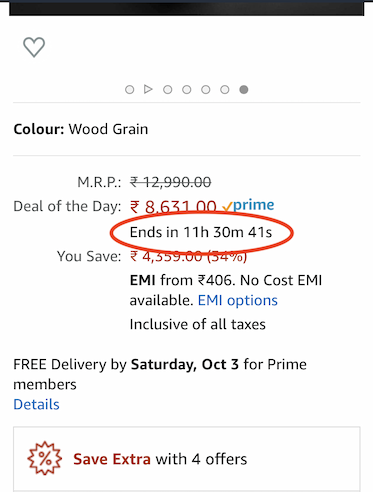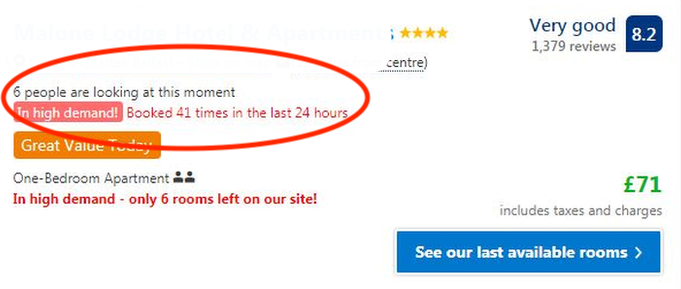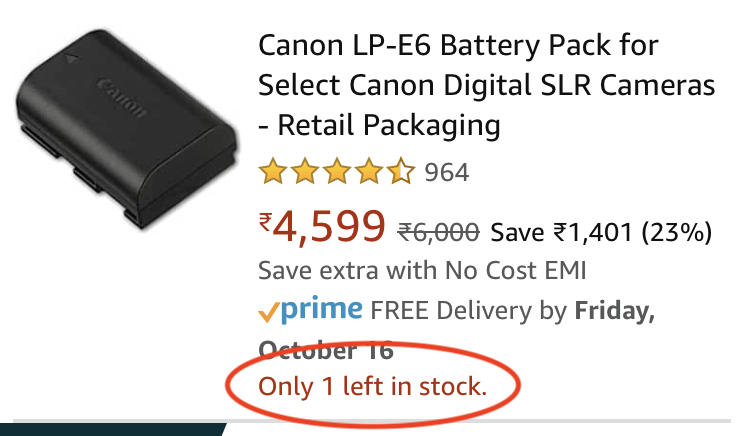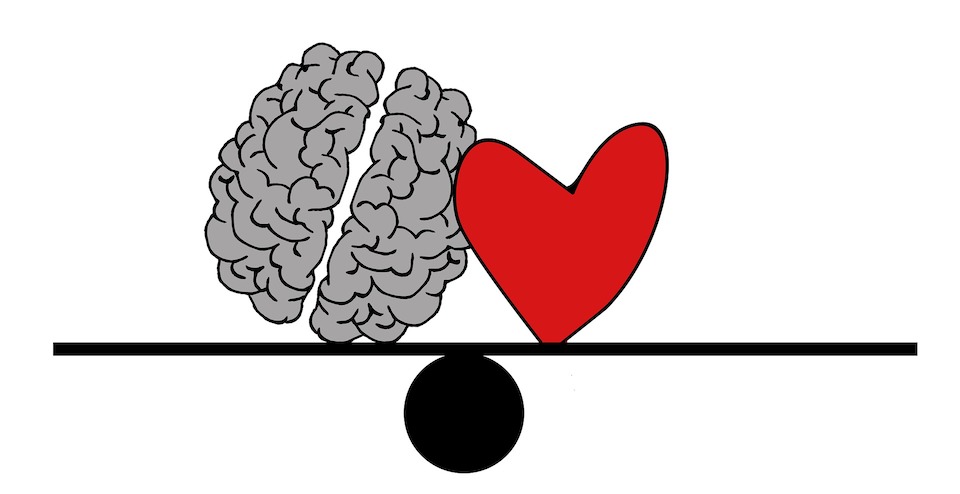In this post, we will analyse how we are tricked into buying by marketers. While we think a buying decision is made by us, more often than not, we are tricked into buying by sheer placement of the product and the comms
The new iPhone is launching next month and you are excited regarding the launch. You already have the the previous generation iPhone but you still plan to upgrade by inventing excuses on how the new one will help you improve your productivity or hobby
You do this although you know if you tried selling your existing phone, you would only get 50% or less of what you paid last year, even if it was maintained in pristine condition!
You want to buy that expensive dress you saw online; after all you may need it for the proposed outing the following month and out of the blue, there’s a limited time discount running on the product. How sweet can it get!
These are not isolated events. We spend money knowing well that there is no return on investment; after all isn’t life larger than measuring everything with an ROI PoV?!
While that is a nice argument, was the decision to buy yours or were you tricked into buying?
Did you see the dress and then decide you needed a dress for your outing or had you planned to buy an outfit when you planned the outing?
Do you really need the iPhone or was it all the social media hype that got you interested on the new iPhone release?
Let us look at how we are tricked into buying by using some psychological tools
1. Building FOMO
FOMO stands for Fear Of Missing Out. Marketers use FOMO as a tool to make us take quick buying decisions, by building the fear that we may miss out on the deal. If FOMO wasn’t designed into the sale, then we would have thought through our buying decision and may have decided not to buy! FOMO is probably one of the reason you end up having all those clothes & shoes in your closet
In the below example, you can see how a FOMO is created through “Ends in 11h 30m 41s” count down communication. As the timer counts down, you are driven to make an irrational decision to buy and not miss out on the deal. Similarly, “Only X peaces left” is another of the many effective FOMO techniques

2. Attracting through exclusivity
Here the strategy is to limit the access of the product to a few. This is done through high prices, making the product scarce, having a wait-list, needing a membership, etc.
All these techniques ensures that not everyone can buy the product. This works on the human psychology and triggers the sense of curiosity and the aspirational need to belong to the “club”. This need will drive you to do what it takes to purchase the product and be part of the “club”
Apple uses the tool of exclusivity, credit card companies use this by giving special privileges such as lounge access, concierge services, etc to certain customers, retailers use this by pre-opening new collection to select customers, etc
Here again, your primary drive to buy could be to feel exclusive than the actual need for the product
3. Social proofing
Social proofing works on the psychology that people tend to do what they observe others doing in an attempt to behave correctly. This stems from our need to socially conform
Marketers use this by showing you what others similar to you have done. This gives you a “go ahead” to follow their lead
You can observe social proofing in booking.com. When you browse through hotels, they show messages such as “Booked x times in the last 24 hours”

This not only works on the social proofing aspect, where you feel confident to go ahead with a decision but also drives in a sense of urgency. This is heightened when the scarcity principle, which is explained later in this blog, is clubbed with this
Do you see any other techniques in the booking.com image? If yes, mention it in the comments!
Here’s an interesting example on social proofing. Back in 1934, Entrepreuner Sylvan Goldman noticed that his customers stopped shopping once their grocery bags became heavy, so he invented the shopping cart
However his customers were not using the shopping cart. So he hired people posing as customers to use the cart. When his actual customers noticed this, they started using the shopping cart!
4. Placement of choices
How a choice is displayed to you can determine which option you choose! A popular method is to have a decoy as a choice, where you think you are given a choice, however the new option drives you to choose what the marketer wants you to choose
An example of this was explained by Dan Ariely, in his book Predictably Irrational. In the book, he explains seeing the following online advertisement from The Economist
- Buy Economist online edition for $59
- Buy Economist print edition for $125
- Buy Economist print + Online edition for $125
Which one would you choose? Considering the three options, the third seems to be a steal because you get both the print and the online edition at $125, whereas in the second option, for the same amount you only get the print edition
Now what happens if you have only the first and the third option?
- Buy Economist online edition for $59
- Buy Economist print + Online edition for $125
Now what would be your choice? Chances are you will choose the first option, as that seems to be the best bang for the buck
Here the second option was just a decoy to push you to choose the third option
5. Familiarity
Have you noticed targeted Ads across multiple platforms, after you searched for some product? Yes, you do know that it is because your search was tracked due to which the Ads engine is serving you the Ads. But have you thought what impact this has on your decision making?
Take an example of you researching for a phone in YouTube. The moment you finish the first video, YouTube serves the next and you keep watching. Later you do casual browsing and you start seeing related Ads
You get interested and re-start your research. Gradually you get convinced on the need for the switch as more and more YouTubers & bloggers recommend you to click on their affiliate links.
Eventually you end up buying because that seems to be the obvious thing to do
6. Scarcity principle
The more rare or unattainable something is, the more valuable it is in your eyes. The scarcity principle sparks the sense of curiosity and urgency which tips you to buy the product
You find scarcity principle used in many places, from retailers calling out limited stocks to hotel booking sites calling out “just 2 rooms available” to Oneplus doing their pre-order campaign

7. Anchoring
Anchoring is the tendency to rely on the first piece of information. Through anchoring, marketers manage our perception of value and what we think is a steal deal
One way of anchoring is by putting a price and striking it off with a discounted price. Here, we anchor to the strike-off price and consider anything below that as a good deal

If you want to learn more on anchoring as a concept, read my blog on Negotiating skills for your daily life
8. Framing
Framing is a method of constructing the message. You could react very differently for the same information depending on how it is presented. Marketers frame sentences such that the choice that you are offered looks inviting
A product which claims “95% fat free” is going to be more appealing than one that mentions “5% fat”
Both provide the same info, yet people would lean towards buying the former
These are some of the techniques through which we are tricked into buying by marketers. As a consumer, having knowledge of these techniques will help you introspect whether the urge to buy the product is because of your need or want
Do share your thoughts in the comments. If you liked this article, then please share it

One response to “Psychology behind marketing: Why do you spend money?”
[…] If you liked this article, then do signup for my newsletter, follow me on Instagram and YouTube and share the post. I also write on varied topics such as this […]